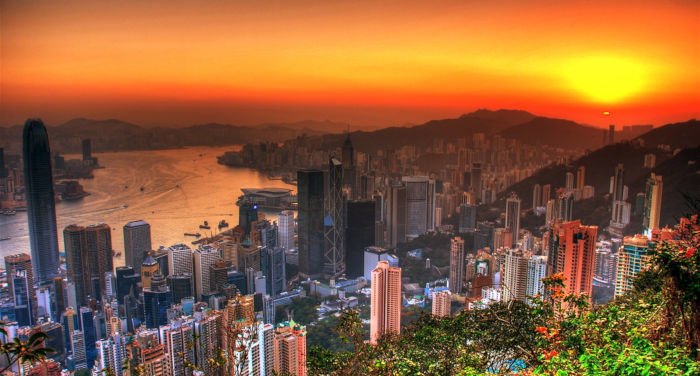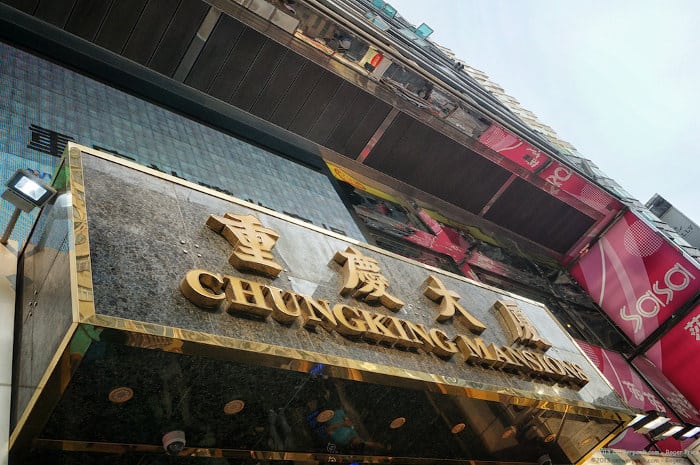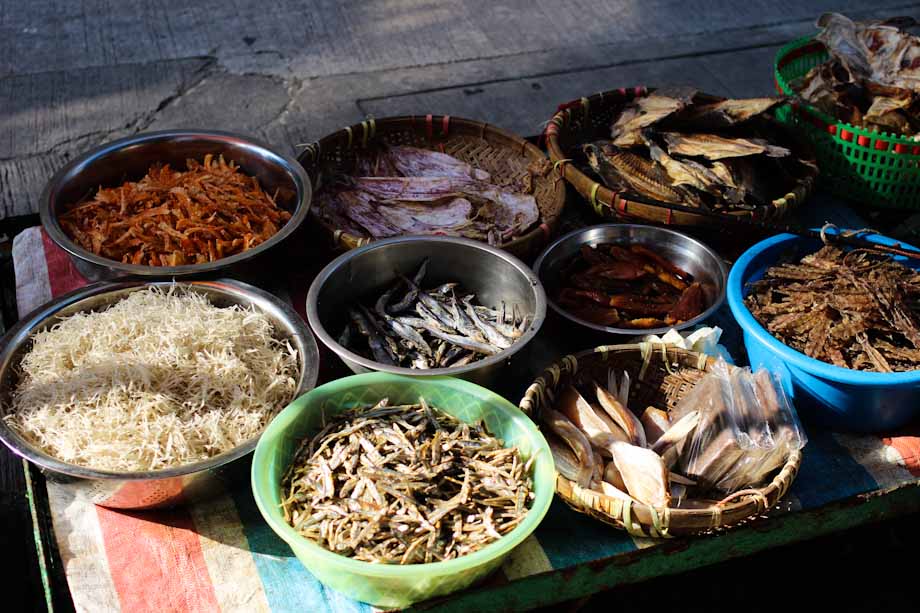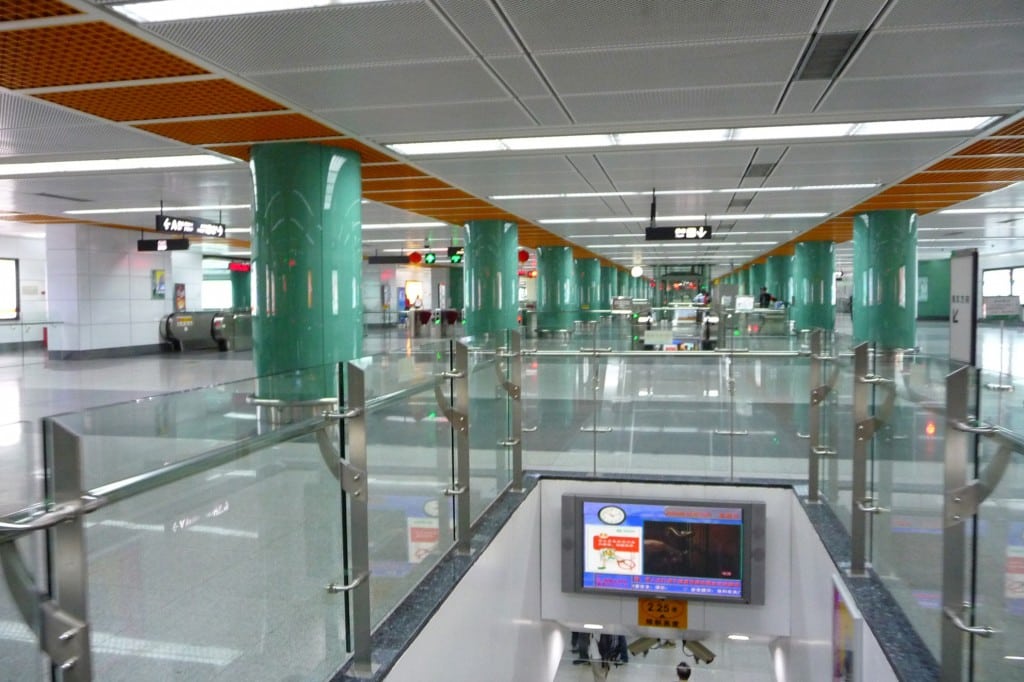
Living and working in Hong Kong – Index
This guide is a collection of resources and practical advice for living in Hong Kong.
The transportation system in Hong Kong
Hong Kong airports
Hong Kong International Airport (HKIA), called Chek Lap Kok Airport (赤鱲角機場) in Cantonese, is the only civil airport and the fourth busiest in Asia in terms of annual passengers.
Being located on the artificial island of Chek Lap Kok and 34 km away from Central, you’ll reach the airport in 25 minutes by train (the Airport Express). Trains leave every 10th minute starting from 5:54am to 23:28pm and every 12th minute from 23:28pm to 00:48am.
Going by taxi will take you around one hour and set you back around HKD 370. If you take a regular bus, which is much cheaper, you should set aside at least 60 minutes for the bus trip, as there are many stops on the way.
One of the most popular bus services is route A21 which costs HKD 33 for adults and HKD 16.5 for children.
Hong Kong Metro
Hong Kong is one of the most densely populated places in the world, not surprisingly, the Hong Kong MTR is the most popular transportation option. The following lines are currently stretching over the city:
- Tsuen Wan Line – Red
- Kwun Tong Line – Green
- Island Line – Blue
- South Island Line – Yellow
- Tseung Kwan O Line – Purple
- Tung Chung Line – Orange
- Disneyland Resort Line – Pink
- Airport Express – Grey
- East Rail Line – Light Blue
- West Rail Line – Cerise
- Ma On Shan Line – Brown
It’s fairly cheap to travel with the MTR and will usually set you back around HKD 10 (USD 1.3) per trip.
Hong Kong trams
The Hong Kong tram system is called Ding Ding and highly popular, especially among locals. The tram has 6 different lines where the routes are as follows:
- Western Market – Shau Kei Wan
- Happy Valley – Shau Kei Wan
- Shek Tong – Tsui North Point
- Shek Tong – Tsui Causeway Bay
- Kennedy Town – Happy Valley
- Kennedy Town – Shau Kei Wan
Even if the tram is generally slower than the MTR, it can be a charming experience and cheaper with fares as follows:
- Adult: HKD 2.60
- Child (Aged 3 or above and under 12): HKD 1.30
- Senior Citizen (Aged 65 or above): HKD 1.20
- 4-Day Pass: HKD 34.00
- Monthly Ticket: HKD 220.00
Buses in Hong Kong
Bus is another popular and convenient option and is generally cheaper than the MTR. A single fare costs HKD 4 – 46, depending on where you’re going. Night fares are a bit higher though.
Keep in mind, it can be a bit tricky to travel by bus if you’re a tourist or just plan to stay in Hong Kong short term. Instead,newly arrived expats and tourists tend to use the MTR and walk or travel by taxi the remaining distance.
Having that said, you should definitely try out the bus system, which runs over pretty much the whole of Hong Kong (excluding some of the islands).
Hong Kong public transportation card (The Octopus card)
If you plan to stay in Hong Kong over several days, I highly recommend you to buy an Octopus card. Simply put, the card was issued in 1997 and is Hong Kong’s only electronic fare collection system. You can charge the card with money which makes it more convenient to use and you’ll save plenty of time, compared to buying single tickets every time.
In fact, the Octopus card has even become a payment system, thanks to its popularity. You can pay with the card in supermarkets, car parks, grocery stores, fast food and retail stores like Circle K, 7-Eleven and McDonald’s.
Hong Kong day passes
You can also buy a Day Pass which costs around HKD 65 for adults and allows you to travel freely with the MTR lines and MTR buses for 24 hours. Keep in mind that the card is only available to tourists who’s been in Hong Kong for less than 14 days.
To know more about the different options offered, I recommend you to visit the Hong Kong MTR’s official website.
Weather in Hong Kong
Hong Kong has a subtropical climate with hot and humid summers and mild winters. You’ll experience thunderstorms and showers from time to time during the summer, when the rainy season occurs.
According to Wiki, the highest and lowest recorded temperatures at the Hong Kong Observatory are 36.6 degrees Celsius measured on the 22nd of August 2017 and 0 degrees Celsius measured on the 18th of January 1893.
So what clothes should you wear in Hong Kong?
Linen pants, Chinos or shorts are suitable paired with T-shirts, long sleeved linen shirts or short sleeved shirts during the summer. During the winter, you can wear a thin jacket with a sweater and pants.
For more formal occasions, you can wear a suit and a trench coat during the cold season.
Where to live in Hong Kong
Being a metropolis and the financial center of Asia, Hong Kong has some of the most densely populated areas in the world, peaks, jungles and islands. Rents are high in general, but you’ll be able to find some gems and where rents are lower compared to the crowded areas.
Let’s have a look at some of the most popular areas to live in Hong Kong and what unique features each area has.
Living in the northern parts of Hong Kong Island
The northern parts of Hong Kong Island are home to places like Mid Levels and the Peak, some of the most exclusive and busy areas. Most banks and the financial district are located here and it’s a suitable area if you want to be close to where things happen.
Let’s have a look at some of the most popular areas in the northern parts of Hong Kong Island.
Living in Sheung Wan
Sheung Wan is located in the North Eastern parts of the island, but not in the busiest areas. Yet, you’ll be close to the airport and to the financial center if you live here. The area has many restaurants, cafes and bars, you’ll be very close to Lan Kwai Fong if you stay here.
The drawback of living in Sheung Wan are the lights and noise coming from the bar areas, like Lan Kwai Fong. If you move with a family, you might want to look elsewhere.
Living in Mid-Levels
Mid-levels is located closely to Sheung Wan and more relaxed. Still, you’ll be close to the CBD and many bars and restaurant areas.
Not to forget, there are many popular hiking trails in the vicinity, like Bowen Road Park.
Mid-Levels attracts everything from young professionals to expat families, even if the area struggles with light pollution and noise from construction and nearby bars.
Living in the southern parts of Hong Kong Island
We’ve covered a couple of interesting and popular areas in the northern parts, let’s move on to the southern parts. This part of the island is pretty interesting and undiscovered by many people.
Living in Stanley
Stanley is one of the most beautiful districts in Hong Kong, this is reflected in the property prices as well. It’s not strange, as you’ll find some of the best beaches, many tourists, quality schools and restaurants.
The only downside of staying in Stanley is that the district tends to be congested, especially during weekends and holidays.
Living in Repulse Bay
Repulse Bay has some of the most expensive property markets in the world. Those who can afford can live a beach life here and have a short ride away from Central.
Being one of the most sought after places to live in Hong Kong, there’s not really anything you can complain about, except that it’s very pricey.
Other locations
The Island is not your only choice and you should definitely have a look at New Territories and nearby islands, like Lamma Island. Here, you’ll find peace and tranquility and be merely 30 minutes away from the city by boat.
Property prices are significantly lower, the only drawback of living here as you’ll not find as many schools or medical facilities.
You can also have a look at our articles dedicated to co-living spaces in Hong Kong.
Tourism in Hong Kong
Hong Kong attracts many tourists for sure and especially from Mainland China. Having some of the lowest taxes in the world, products are exempt from import duty, making Hong Kong a heaven for shoppers.
Simply put, here, East meets West and you can enjoy dinners at 1-Michelin star restaurants, paying as little as 5 US dollars.
However, as we’ve already written an article that covers the top tourist attractions in Hong Kong, I won’t go into more detail in this article.
Hospitals and clinics in Hong Kong
Hong Kong offers great health care with hospital staff that can speak English. As such, I don’t divide Hong Kong hospitals into “Local” or “International” hospitals, but rather in “Private” and “Public” hospitals.
Yet, Hong Kong has some of the most expensive health care in the world (only second to the US) and going for the public option is often times totally fine. In total, there are 56 hospitals where 44 are public and 12 are private.
Public hospitals in Hong Kong
All public hospitals are run by the Hospital Authority (HA), I’ve listed some of them by areas below.
Hong Kong Island – East Cluster
- Cheshire Home, Chung Hom Kok
- Pamela Youde Nethersole Eastern Hospital
- Ruttonjee Hospital
Hong Kong Island – West Cluster
- Grantham Hospital
- MacLehose Medical Rehabilitation Centre
- Queen Mary Hospital
Kowloon – Central Cluster
- Hong Kong Buddhist Hospital
- Hong Kong Children’s Hospital
- Hong Kong Eye Hospital
Kowloon – East Cluster
- Haven of Hope Hospital
- Tseung Kwan O Hospital
- United Christian Hospital
Kowloon – West Cluster
- Caritas Medical Centre
- Kwai Chung Hospital
- North Lantau Hospital
New Territories – East Cluster
- Alice Ho Miu Ling Nethersole Hospital
- Bradbury Hospice
- Cheshire Home, Shatin
New Territories – West Cluster
- Castle Peak Hospital
- Pok Oi Hospital
- Siu Lam Hospital
Private hospitals in Hong Kong
Below I’ve listed the private hospitals available in Hong Kong.
Hong Kong Island
- Matilda International Hospital
- Canossa Hospital
- Gleneagles Hong Kong Hospital
- Hong Kong Adventist Hospital – Tsuen Wan
- Hong Kong Sanatorium & Hospital
- St. Paul’s Hospital
New Territories and Kowloon
- Precious Blood Hospital
- St. Teresa’s Hospital
- Evangel Hospital
- Hong Kong Adventist Hospital – Stubbs Road
- Hong Kong Baptist Hospital
- Union Hospital
Schools and universities in Hong Kong
International, private and public schools
Hong Kong has one of the best educational systems in the world and foreigners can enroll in three different kinds of schools: International schools, private schools and public schools. These are further broken down into partly government-funded schools, like ESF schools (English Schools Foundation).
Overall, the curriculum is based on the British system which makes Hong Kong schools highly competitive, no matter if you go for a public or an international school. Expats often put their kids in international schools, which are by far the most expensive.
Yearly tuition can reach between 180,000 – 250,000 HK dollars and one time admission fees can even reach up to 1 million US dollars.
With less foreigners arriving with golden expat packages, increasingly more newcomers decide to put their children in local private schools, or even in public schools. If you can’t afford international schools, then ESF schools can be a good option,even if the fees are generally higher.
One of the main benefits of going for an ESF school, instead of a public local school, is that your children will be taught in English and the competition is lower.
Going for an international school, on the other hand, can also bring many benefits, if you can afford it.
Here, class sizes are smaller (11-28 pupils instead of 30), the schools can run any curriculum and you’re not bound to geographical areas. Not to forget, international schools are often the gateway to prestigious universities in Hong Kong and overseas.
Universities
Having some of the best primary and secondary education in the world, it probably doesn’t come as a surprise that Hong Kong has many top universities. The top five universities are:
- University of Hong Kong
- Hong Kong University of Science and Technology
- Chinese University of Hong Kong
- City University of Hong Kong
- Hong Kong Polytechnic University
University of Hong Kong
University of Hong Kong was founded in 1911 and is the oldest tertiary institution in Hong Kong. It’s the number one university in Hong Kong and ranked around top 30 globally.
The university is located on Pokfulam Road and Bonham Road in Lung Fu Shan on Hong Kong Island and has more than 29,000 students.
Hong Kong University of Science and Technology (HKUST)
HKUST is one of the most reputable universities in Asia and located in Clear Water Bay. It has one of the best MBA programs in the world, just slightly behind University of Hong Kong.
This university isn’t as old as University of Hong Kong and was founded in 1991. As such, it’s considered to be one of the fastest growing in the world. HKUST is ranked around top 40 internationally as of 2019.
Chinese University of Hong Kong
The Chinese University of Hong Kong is a public research university located in Shatin. It’s the second oldest university and currently has more than 20,000 pupils.
It’s ranked number three in Hong Kong and number 49 in the world by QS.
City University of Hong Kong
City University of Hong Kong is located in Kowloon and was founded in 1984. It’s a public research university having around 20,000 students. Despite not being the best university in Hong Kong, it offers quality education and has a good reputation locally and overseas.
Hong Kong Polytechnic University
Hong Kong Polytechnic University established in 1937 and has around 32,000 students. Being located in Hung Hom (Kowloon), the university has a wide network with hundreds of institutions in 47 countries and regions.
Shopping in Hong Kong
Being a free port, Hong Kong has no VAT and import duties which make it one of the best places to go for shopping. You can find pretty much anything here and it’s the perfect place to buy electronic products, clothes, luggage, cameras and more.
If you look for tall shopping malls, then Tsim Sha Tsui is probably your place to go. Here, you can find K11, a big mall that offers everything from beauty, fashion and lifestyle products. There are many other stores and malls in the vicinity.
Central is the best place to go for luxury shopping and you’ll find most of the world known luxury brands like Stella McCartney, LV, BOSS, Armani and Prada.
People who look for electronic products find Sham Shui Po as one of the best areas to come across cheap products in vast numbers. If you look for cameras and related equipment, Stanley Street and Mongkok Computer Centre are two popular options.
Both the Mongkok Computer Centre and Wan Chai Computer Centre are great options if you look for computers. The Golden Computer Arcade is a place you should definitely visit if you look for games and computer equipment.
The best shopping malls in Hong Kong
Below you can find big and popular shopping malls in Hong Kong.
Address: 15 Queen’s Road Central, Central, Hong Kong Island, Hong Kong
Hours of operation: 10am to 10pm (daily)
Address: 3–27 Canton Road, Tsim Sha Tsui, Kowloon, Hong Kong
Hours of operation: 10am to 10pm (daily)
Address: 88 Queensway, Admiralty, Hong Kong Island, Hong Kong
Hours of operation: 10am to 10pm (daily)
Address: 8 Finance Street, Central, Hong Kong
Hours of operation: 10am to 10pm (daily)
Address: 1 Matheson Street, Causeway Bay, Hong Kong
Hours of operation: 10am to 10pm (daily)
Address: 1 Austin Rd W, Tsim Sha Tsui, Kowloon, Hong Kong
Hours of operation: 10am to 9pm (daily)
Address: 80 Tat Chee Ave, Kowloon Tong, Hong Kong
Hours of operation: 7am to 12am (daily)
Address: Sha Tin Centre Street, Sha Tin, New Territories, Hong Kong
Hours of operation: 10am to 10pm (daily)
Addresses and useful numbers in Hong Kong
General consulates
Sometimes, travelers and residents need to contact local embassies, might they’ve lost a passport or need other help. Below you can find the main consulates and embassies in Hong Kong:
Consulate of the United States in Hong Kong
Address: 26 Garden Rd, Central, Hong Kong
Telephone: +852 2523 9011
Website: https://hk.usconsulate.gov/
Hours of operation: Monday to Friday 8:30am to 12.30pm and 1.30pm to 5:30pm
Consulate of the UK in Hong Kong
Address: 1 Supreme Ct Rd, Admiralty, Hong Kong
Telephone: +852 2901 3000
Website: https://www.gov.uk/world/organisations/british-consulate-general-hong-kong
Hours of operation: Monday to Friday, 8:30am – 5pm
Consulate of Canada in Hong Kong
Address: 8th & 9th floor, Taikoo Place Berkshire House, 25 Westlands Rd, Quarry Bay
Telephone: +852 3719 4700
Website: https://www.canadainternational.gc.ca/hong_kong
Hours of operation: Monday to Friday, 8:30am – 5pm
Consulate of Australia in Hong Kong
Address: Hong Kong, Wan Chai, Harbour Rd, 25號海港中心23/F
Telephone: +852 2827 8881
Website: https://hongkong.china.embassy.gov.au
Hours of operation: Monday to Friday, 9am – 5pm
Consulate of Germany in Hong Kong
Address: 21/F United Centre 95 Queensway, Admiralty, Central, Hong
Telephone: +852 2105 8788
Website: https://hongkong.diplo.de
Hours of operation: Monday to Friday, 8:30am – 11:30am
Consulate of France in Hong Kong
Address: 25/F & 26/F Tower II, Admiralty Centre, 18 Harcourt Rd, Central, Hong Kong
Telephone: +852 3752 9900
Website: https://hongkong.consulfrance.org/-English
Hours of operation: Monday to Friday, 8:30am – 12:30am (on Wednesdays, the consulate is open between 2pm – 4:30pm as well)
The Hong Kong Immigration Department
If you need to extend your visa or renew your residence permit, you need to contact an Immigration Branch Office to file an application (except for the Hong Kong Island Travel Documents Issuing Office).
Keep in mind that you’ll also need a Hong Kong ID card, if you’re aged above eleven and plan to reside in Hong Kong. The immigration branch offices can help with such application.
The following immigration branch offices exist in Hong Kong:
East Kowloon Office
Address: Level 2, Sceneway Plaza, Sceneway Garden, 1-17 Sceneway Road, Lam Tin
(MTR Lam Tin Station – Exit B)
Telephone: +852 2347 3492 (hotline for general inquiries: +852 2824 6111)
Hours of operation: Monday to Friday, 9:00am – 12:45pm and 2:00pm – 4:30pm. On Saturdays, between 9:00am – 12:30pm
West Kowloon Office
Address: Ground Floor, 28 Kimberley Street, Tsim Sha Tsui, Kowloon (MTR Tsim Sha Tsui Station – Exit B2)
Telephone: +852 2359 4426 (hotline for general inquiries: +852 2824 6111)
Hours of operation: Monday to Friday, 9:00am – 12:45pm and 2:00pm – 4:30pm. On Saturdays,
9:00am – 12:30pm
Sha Tin Office
Address: 3rd Floor, Sha Tin Government Offices, 1 Sheung Wo Che Road, Sha Tin
(MTR Sha Tin Station – Exit B)
Telephone: +852 2158 6419 (hotline for general inquiries: +852 2824 6111)
Hours of operation: Monday – Friday, 9:00am – 12:45pm and 2:00pm – 4:30pm. On Saturdays,
9:00am – 12:30pm
Fo Tan Office
Address: Shops 405-407, 4/F, Jubilee Square, 2-18 Lok King Street, Fo Tan
(MTR Fo Tan Station – Exit C)
Telephone: +852 2651 8644 (hotline for general inquiries: +852 2824 6111)
Hours of operation: Monday to Friday, 9:00am – 12:45pm and 2:00pm – 4:30pm. On Saturdays,
9:00am – 12:30pm
Yuen Long Office
Address: 1/F, Yuen Long Government Offices, 2 Kiu Lok Square, Yuen Long
(MTR Long Ping Station – Exit E)
(Light Rail Hong Lok Road Station)
Telephone: +852 2475 4145 (hotline for general inquiries: +852 2824 6111)
Hours of operation: Monday to Friday, 9:00am – 12:45pm and 2:00pm – 4:30pm. On Saturdays,
9:00am – 12:30pm
Hong Kong panel clinics (for Medical Reports)
To get a work visa in Hong Kong, you need to provide your a medical report, the contract with your employer, proof of work experience and more.
Some panel clinics who can help you to get a medical report include:
- Caritas Medical Centre
- Grantham Hospital
- Prince of Wales Hospital
- Princess Margaret Hospital
- Queen Elizabeth Hospital
I recommend you to check the Hong Kong Hospital Authority’s website, where you can find a complete list with panel clinics in Hong Kong.
Forums and directories of Hong Kong
Geoexpat is one of the biggest forums and directories in Hong Kong, where people can ask questions and get help to find apartments, domestic helpers, find activities and services and find jobs.
Chambers of Commerce in Hong Kong
There are many big chambers available for foreigners who wish to expand their network in Hong Kong. In example is the American Chamber of Commerce (AmCham), but you’ll also find the European Chamber of Commerce (Eurocham), for example.
Internations is a German website and available in numerous countries worldwide. It’s a perfect place to join groups, meet up with new people and to get general advice.
Meetup is another great website and not as formal or business oriented as Internations. Here, you’ll be able to sign up for various activities such as culture and language exchanges, sports events and more.
Photo Credits: ![]() Sunrise over Hong Kong by slack12
Sunrise over Hong Kong by slack12



